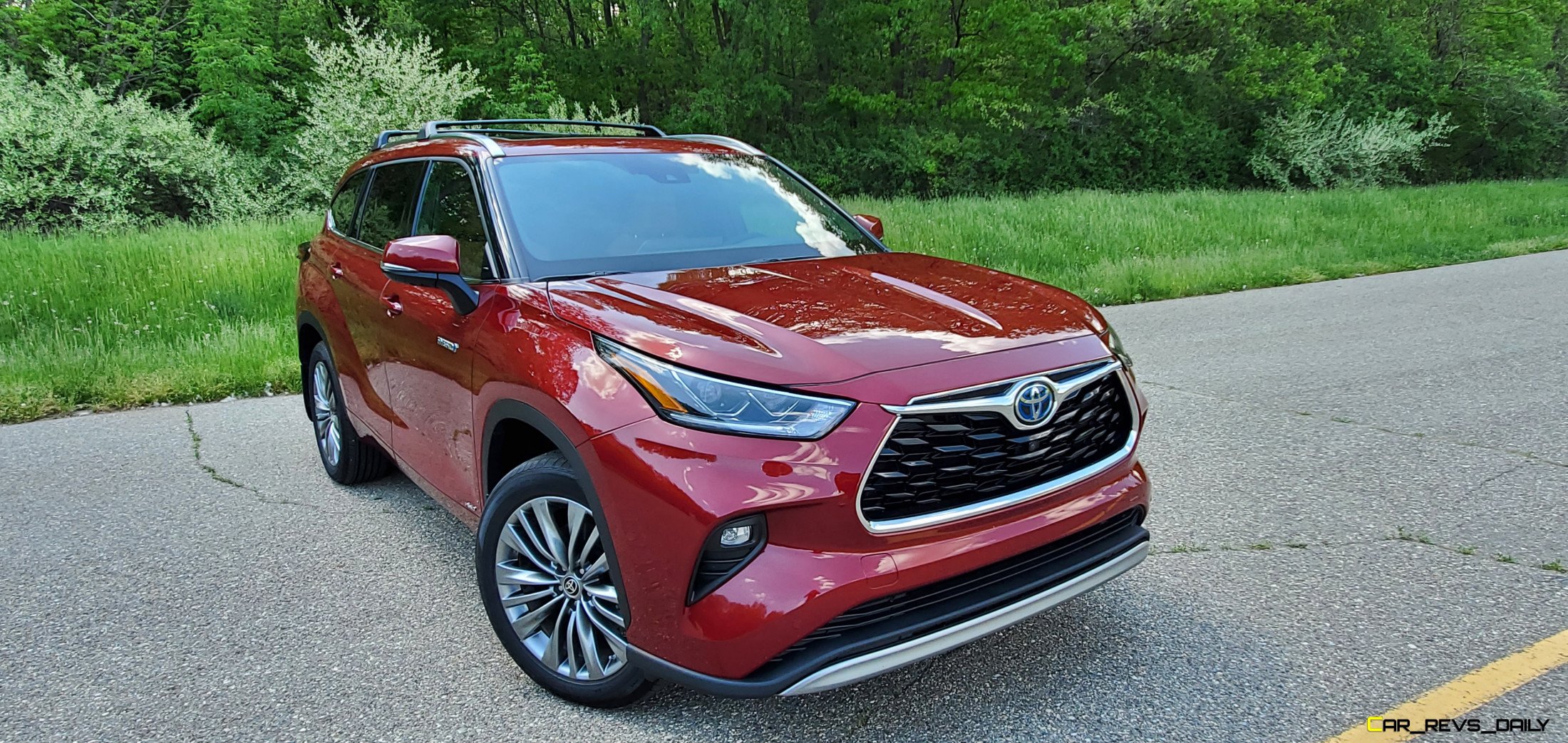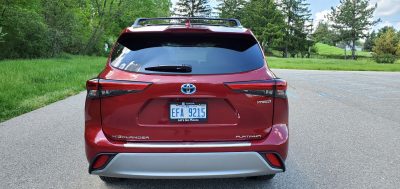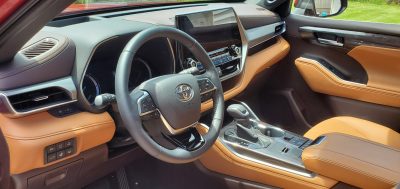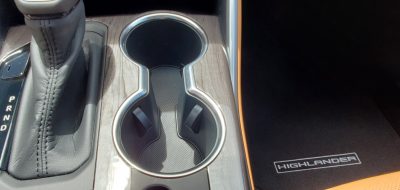It seems that there is no shortage of capable three row SUVs to choose from these days. With the segment currently going through a massive boom time, manufacturers big and small have unleashed a whole swath of models to try and cash in on the pent up demand. The Ford Explorer, Hyundai Palisade and the Honda Pilot are just some of the popular marques out in the market place today. However, the Volkswagen Atlas Mazda CX-9 and the Subaru Ascent are eager to disrupt the established pecking order. One of the veteran offerings is the Toyota Highlander which underwent a massive revamp for the 2020 model year. But can the Highlander still hold its own in a growing sea of family focused contenders? We were eager to find out.
Highlander Takes Pages From Supra Playbook With Styling:
The outgoing Highlander was a very good disciple of catering to functionality and blocky undertones. However, it was no secret that the Highlander was aging very badly against curvier competitors. Toyota designers were keen to change that and have created a more stylish canvas that is much more modern looking, and even does its best to add some sweeps and curves to the design. Our Platinum grade tester featured a black mesh grille that is contrasted by handsome looking chrome trim as well as a silver lower front bumper for added contrast. A blue Toyota emblem is a key clue that denotes the Highlander’s status as a hybrid (more on that later,) while the the Platinum brings 20-inch alloy wheels to the Highlander family for the first time ever.
Adaptive LED headlights with auto leveling and LED daytime running lights help bring a futuristic flair to the front fascia, while the rear tailights are also adorned with LED units. A rear spoiler serves as a very distant link to the sporty Toyota Supra, and this piece also comes equipped with LED lighting elements. Other goodies include travel ready roof rails, a one touch panoramic sunroof, heated power mirrors, as well as handsome looking scuff plates. When looked at as a whole, the 2020 Highlander addresses many of the flaws that existed with the outgoing model. The droopy rear end is the weakest link in the presentation, but the Highlander is still a few steps ahead of the Ford Explorer, Chevrolet Traverse, and even the Dodge Durango.
World Class Opulence for The Money:
Our tester arrived with a soft touch Glazed Caramel leather interior that looked great, and it also arrived with high quality materials that felt good too. It will never quite surpass a Lexus, but it certainly does make a solid attempt at doing so. There are very convincing swaths of faux wood trim splashed throughout, and the cushy front seats are heated and ventilated. The driver’s seat is a 10-way power affair, with power lumbar and memory functions. The front passenger gets to make do with only a four way power seat, but the Platinum trim also brings a standard power tilt and telescoping leather wrapped steering wheel into the package. Everything in the cabin is logically laid out, and split level storage trays provide convenient places to store smaller items. The gauge cluster features a vibrant 7-inch digital drivers display that is easy to read, and does a good job presenting relevant information to the driver. The center console features a redesigned leather wrapped gear selector, with accompanying buttons for Eco, Sport, and Normal driving modes as well as a separate button for EV mode. The center console features a massive bin, and it can easily swallow a wide range of items.
Meanwhile, the completely redesigned center stack draws plenty of stares, especially when it is equipped with the optional 12.3 inch touchscreen infotainment system. The system features vastly improved screen quality when compared with the old Highlander’s unit, and it can be even split into two or three screens depending on what occupants are doing. This includes accessing the cluster of built-in apps, fine tuning the radio, and even operating the AC system. However, it does not offer the ability to make the map for the navigation system into a full screen view which is a shame considering that it would look great in a screen of this size. Map size aside, the navigation system’s dynamic guidance and the voice recognition system are very impressive, and very first rate especially for a mainstream offering. Amazon Alexa, Android Auto and Apple CarPlay are all standard which is handy since the trio pair quite well with the JBL premium audio system.
Our tester proved to be very roomy for first and second row passengers, but like some other three row offerings that we have encountered, the third row proved to be very cramped for taller passengers. Platinum models like our rig featured second row window sunshades, and heated second row captains chairs. The second row can automatically be raised or lowered via a switch, but the third row does require occupants to manually move it about. The powered rear lift gate opens at a reasonable clip, but in a bid to reduce weight and complexity, Toyota engineers removed the rear glass’s ability to be opened separately, with the gate itself now being opened in one unified piece. Four USB ports are scattered throughout the cabin, and the company is even proud to boast that eight cup holders are available for even the biggest of drinks.
A Big Gamble In Performance:
The biggest change however is found under the hood, with Toyota choosing to take a bold gamble for 2020. The 3.5 liter 295 horsepower V6 is still present and accounted for in the bulk of Highlander trims, but the headline item here is the all new 2.5 liter hybrid four cylinder engine. Not only is this the first time that a four cylinder has entered the Highlander family, but it’s also the first hybrid four cylinder to ever be equipped to the Highlander. The four banger and its two electric motors produce a combined 243 horsepower, and while that is down slightly over the naturally aspirated V6, Toyota prefers you focus on the fuel economy numbers. If you do, you will be in for a very big surprise, with the engine capable of achieving well over 30 mpg in both city and freeway driving. Front wheel equipped models tell a very compelling tale of the tape, with those variants offering 35 mpg in the city and 33 mpg on the freeway. All-wheel drive models like our tester do get dinged very slightly in both categories with mileage going down 1 to 34 mpg in the city and 32 mpg in the city. The V6 soldiers on with its eight speed automatic, but Toyota equipped the four cylinder with an all new eCVT which is supposed to allow the engine to reach its full green potential, but still deliver the realistic shift quality of a traditional transmission.
But fuel economy is only one side of the coin, and ultimately, it’s how an SUV does on a long road trip that makes or breaks the ownership experience. With Governor Whitmer easing COVID-19 related restrictions in the state during the Highlander’s stay with us, we chose to embark on a mini road trip to the village of Wolverine which is only 30 minutes away from the Mackinaw Bridge. With over 200 miles of road between us and the small roadside village, the trek allowed us to get to know the Highlander alot better than any trip to the local mini mall ever could. The 2.5 liter in our tester was a bit noisier than expected in initial acceleration, but get up to speed, and your instantly cocooned into a relatively quiet space, with the new platform providing a much smoother ride than ever before. While the Highlander certainly felt more truck like, there was no denying that some of its car based roots were still present, with minimal amounts of bodyroll and sway. The eCVT helped the engine have plenty of spunk for freeway passing, but we did find occasional bouts of gear hunting when driving through narrow sections of town.
Value Quotient:
With the 2020 Toyota Highlander preferring to flex its mileage numbers versus being an outright bruiser, the big SUV finds itself in a very interesting place in terms of pricing, with the base L model starting at $34,600. The L and the soon to be released XSE variant are the only two flavors of Highlander to not feature the four cylinder engine, with that engine’s availability starting from the $36,800 LE upwards. Our Platinum grade tester had a base price of $46,850, with its optional $425 red paint and various fees helping to push the final sticker to just over $50,000. This is roughly cheaper than some of its rivals like the Explorer Platinum as well as the Hyundai Palisade Ultimate, but other than fuel economy and a value conscious pricing ladder, the Highlander is still outclassed in some areas. For example, the Highlander is still one of a few offerings in the segment to have an engine lineup that does not have a turbocharged offering. That’s noticeable when it is paired up with the Ford Explorer which offers two turbocharged engines with both of them making more power than both of the Highlander’s engines. The big Toyota does strike back with a better interior, but buyers looking for more muscle will not find it here.
Another compelling comparison is with the Volkswagen Atlas which is coming off a light design tweak for the 2021 model year. The Atlas has an interior that is just as comparable as the Highlander’s, along with an equally strong engine lineup. But higher grade Atlas models can get pricey, and there is no hybrid model available. The Atlas also has a cramped second row and an equally tight third row seat.
Overall, the 2020 Toyota Highlander is a textbook example of a well executed redesign. The exterior is distinctively modern, the interior brings enough technology and versatility to please even the largest of families, and the addition of a hybrid offering is a distinctive bright spot in the three row segment. As long as you don’t need a roomy third row seat, the 2020 Toyota Highlander should be at the top of your SUV shopping list.
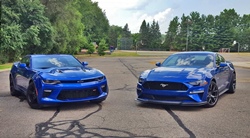
Carl Malek has been an automotive journalist for over 10 years. First starting out as a freelance photographer before making the transition to writing during college, his work has appeared on numerous automotive forums as well as websites such as Autoshopper.com.
Carl is also a big fan of British vehicles with the bulk of his devotion going to the Morgan Motor Company as well as offerings from Lotus, MG, and Caterham. When he is not writing about automobiles, Carl enjoys spending time with his family and friends in the Metro Detroit area, as well as spending time with his adorable pets.

